Lab Notes: CandleScience SimplySoy™ Artisan Wax A custom soy container wax with premium performance at an unbeatable price
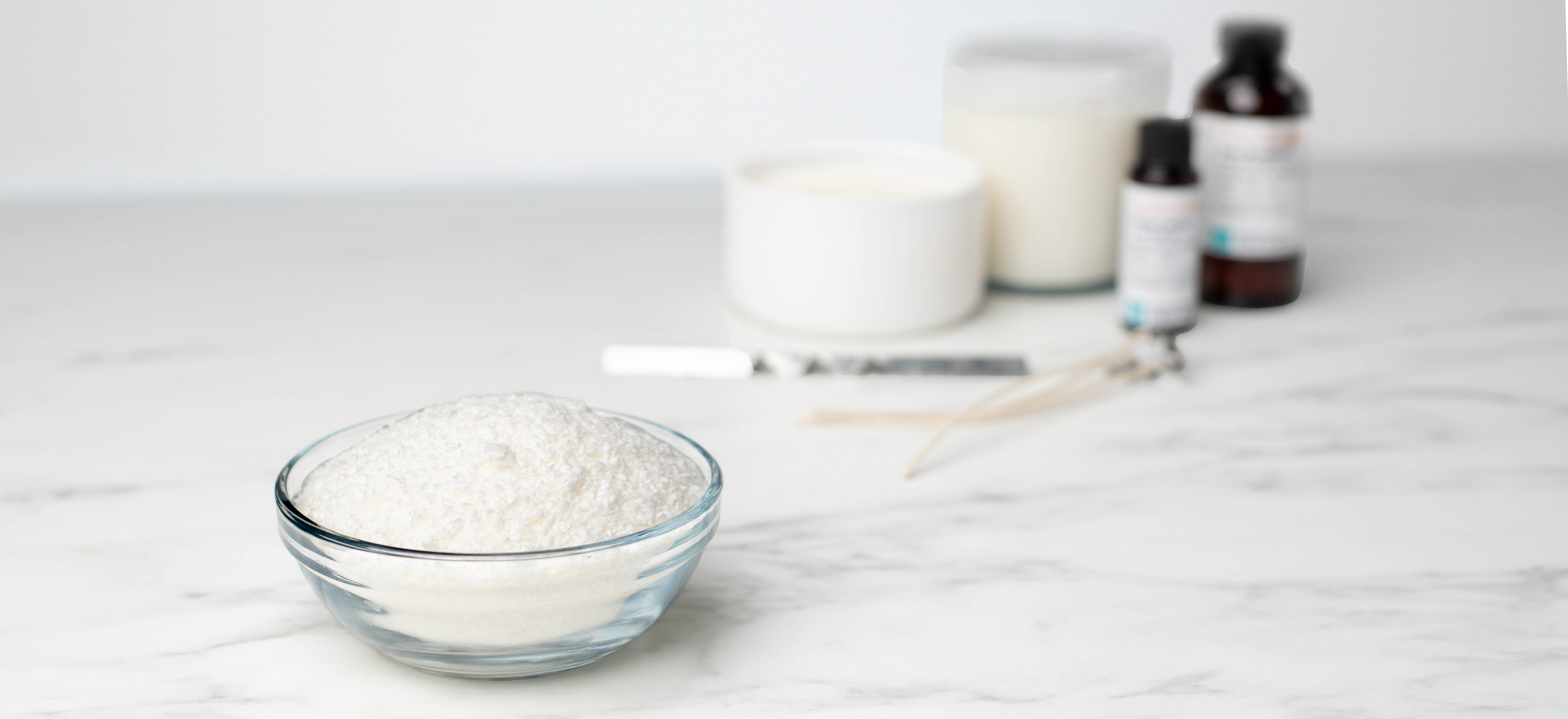
Our Testing Process
We divided our testing into four parts:
- Aesthetics: We tested for surface appearance, glass adhesion, frosting, and color.
- Fragrance Performance: We looked at fragrance solubility, retention, and cold and hot throw performance.
- Burn Performance: We tested various wick series and sizes to find the best burn.
- Stability: We exposed samples to hot and cold environments.
For the fragrance testing segments, we used our Beach Linen, Jamaica Me Crazy, Mountain Pine, Smoked Oud, Strudel and Spice, and White Tea fragrance oils. These fragrances represent a wide range of densities, viscosities, and ingredients. This variation helps to reveal potential issues with solubility or burn performance.
Application: This wax is intended for container candles.
Recommended Fragrance Load: Up to 10%
General Overview
This custom soy wax was tested in the CandleScience lab and is manufactured in the USA. We developed this wax with performance-enhancing soy additives to tackle common soy-wax challenges, like frosting, shipping in warm weather, stability with fragrance, and surface finish. It has a creamy, opaque, off-white appearance, and it is packaged in an easy-to-scoop granular form.
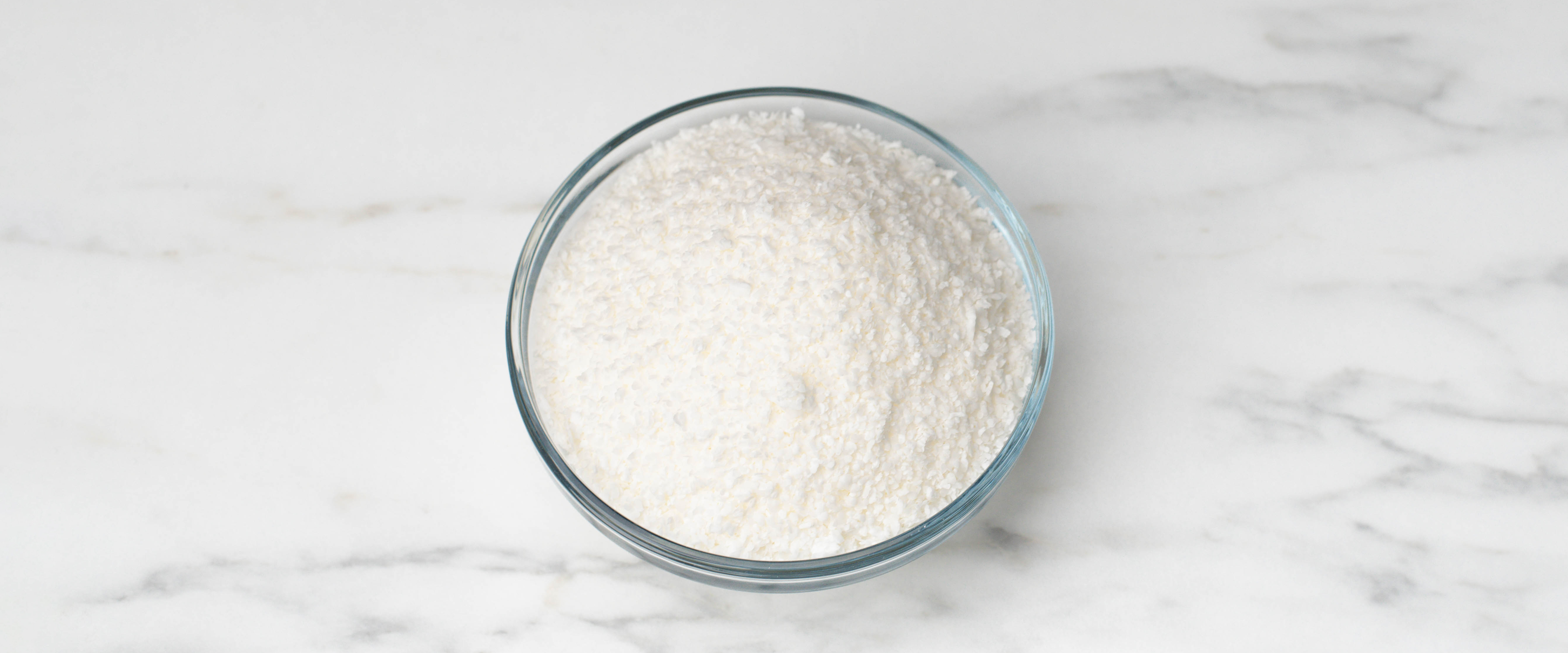
Aesthetics
Surface
We tested pour temperatures ranging from 140°F (60°C) to 180°F (82.2°C). We achieved our best overall results pouring this wax at 160°F (+/- 5°F) or 71.1°C (+/- 2.5°C) in an ambient room temperature of 70°F.
While many of our testers cooled with a smooth, level top in a single pour, a refinishing step is recommended for both aesthetics and performance. In addition to smoothing out any surface blemishes, remelting the tops of your candles will ensure against sinkholes under the surface. It is possible for air pockets to form as the wax cools, particularly in colder environments, which may not be visible prior to lighting the candle. If left unfilled, these cavities may cause burn issues. Surface imperfections and sinkholes can be remedied by remelting the surface with a heat gun or by doing a second pour.
If using dyes, extended melting with a heat gun may cause slight discoloration or increased frosting on the surface. A second pour may provide more aesthetic consistency when coloring candles.
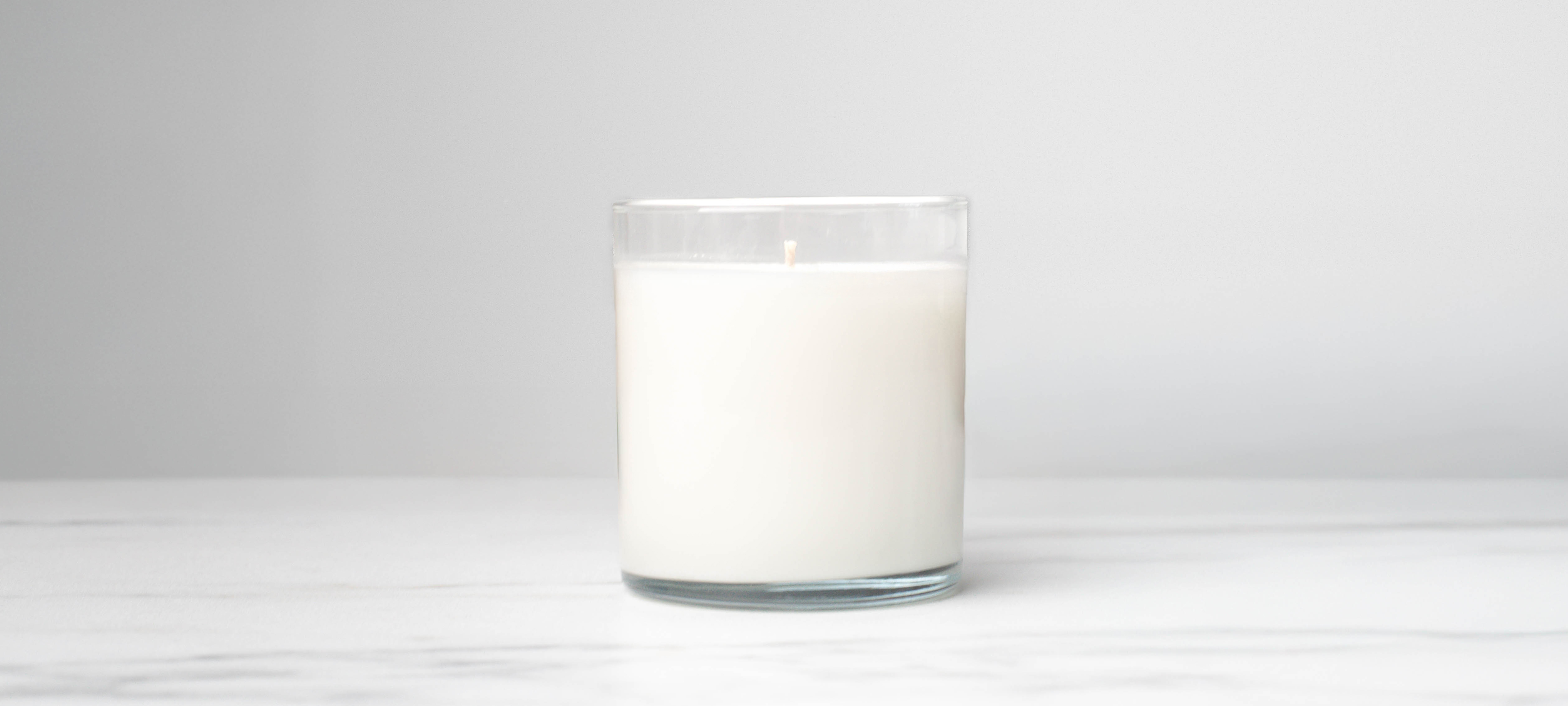
Frosting
This wax contains soy-based additives that are highly effective at reducing frosting. Of the six fragrances tested, four exhibited no frosting within the first week. Two fragrances, Strudel and Spice and Mountain Pine, had minimal frosting on the bottom of the container within 48 hours. After two weeks, the frosting on both fragrances had increased in size but remained isolated to the bottom of the jar. Smoked Oud also developed a very small patch of frosting on the side of the container after two weeks.
Wet spots and frosting can occur over time, and both will be more common in cooler environments.
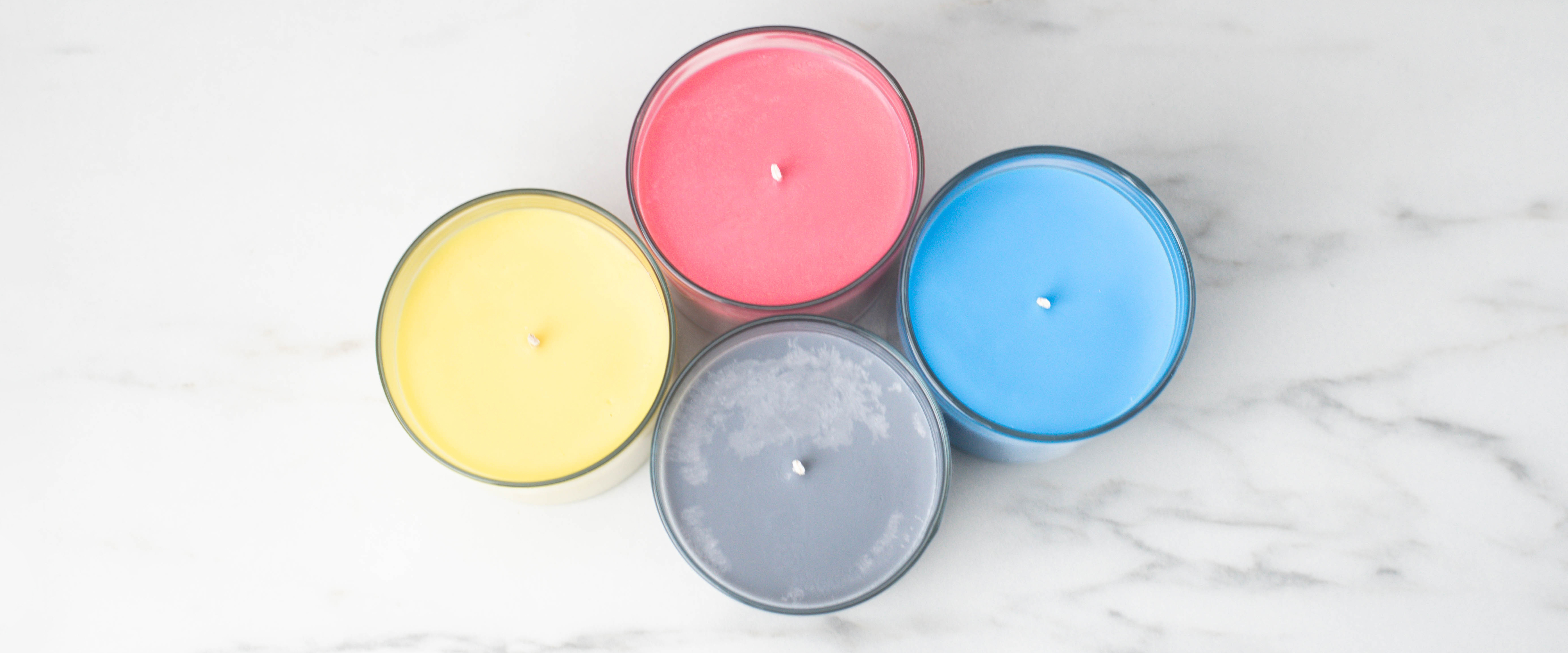
Coloring
We made candles using our Black, Blue, Brown, Red, and Yellow Liquid Candle Dyes at 6 drops per pound of wax. The resulting colors were soft pastels, similar to other 100% soy waxes. Each color can be described as a light-medium shade, with the red dye leaning more pinkish and the black dye producing a dim grey.
Fragrance performance
Solubility
The fragrance oil incorporated easily when added to the wax at 180°F (+/- 5°) or 87.8°C (+/- 2.5°C). After 24 hours, we looked for any signs of sweating or oil separation in the finished candles. At percentages up to 10%, the wax successfully held all of our test fragrance oils.
Hot and Cold Throw
We conducted olfactive testing with a 6% fragrance load and compared the performance to 464 soy wax.
The cold throw was strong after just 24 hours, and improved slightly after 1 week of curing. Across all fragrances, the cold throw matched or exceeded any soy-based wax we’ve tested.
We allowed our tester candles to cure for 3 days, then burned them in our in-house fragrance testing booths to assess strength and scent profile. Every fragrance we tested was rated a 3 on our 3-leaf rating scale. There were no noticeable shifts in scent profile, and the hot throw matched or exceeded the strength of 464 in each test.
Burn performance
General Burn Characteristics
CandleScience SimplySoy™ Artisan Wax has a similar burn profile to 464 and other all-soy waxes. Its sharp melting point provides a full, defined melt pool when properly wicked, which allows for nearly complete wax consumption and minimal residue left on the sides of the container.
Wicking
We tested various sizes of LX, CD, and Aroma-Lite (AL) wicks. Much like 464, all three series performed well in this wax, with the best choice being determined by the size and shape of the container. Because it has a slightly higher melting point than 464, it consistently needed a slightly larger wick in comparison.
Our testing favored the CD series for most single-wick containers, with LX being a very close contender. Makers with a preferred wick series will likely find a suitable size in either line. In certain cases, particularly when using containers with narrow diameters, AL offered the best performance.
When using multiple wicks, we preferred the rigidity and minimal curl of the LX series. However, both CD and AL can be successful in two-wick or three-wick candles with proper testing.
If transitioning from 464 Soy Wax to CandleScience SimplySoy™ Artisan Wax, increasing the wick by one size is a good starting point for testing.
Stability
We conducted stability testing in both hot and cold environments to determine the impact of temperature on the finished candle. We tested with fragrance loads ranging from 6% to 10%.
Finished candles were first placed in a freezer for 24 hours, then removed and returned to room temperature. We checked for any changes in the appearance of the wax, as well as signs of oil separation. All of our test candles successfully retained fragrance with no syneresis. Candles subjected to cold exposure will pull away from the glass due to the temperature shift, which may lead to inconsistent glass adhesion. Cold temperatures may also cause an increase in frosting. Some testers were found to have hairline surface cracks due to freezing, though these lines often disappeared once the candle acclimated back to room temperature.
Candles were also placed in an oven at 113°F (45°C) for 24 hours. For this test, candles were laid on their sides and observed for signs of slumping, melting, or fragrance separation. Using fragrance percentages up to 10%, all of our test candles retained their shape and fragrance oil throughout the heating process.
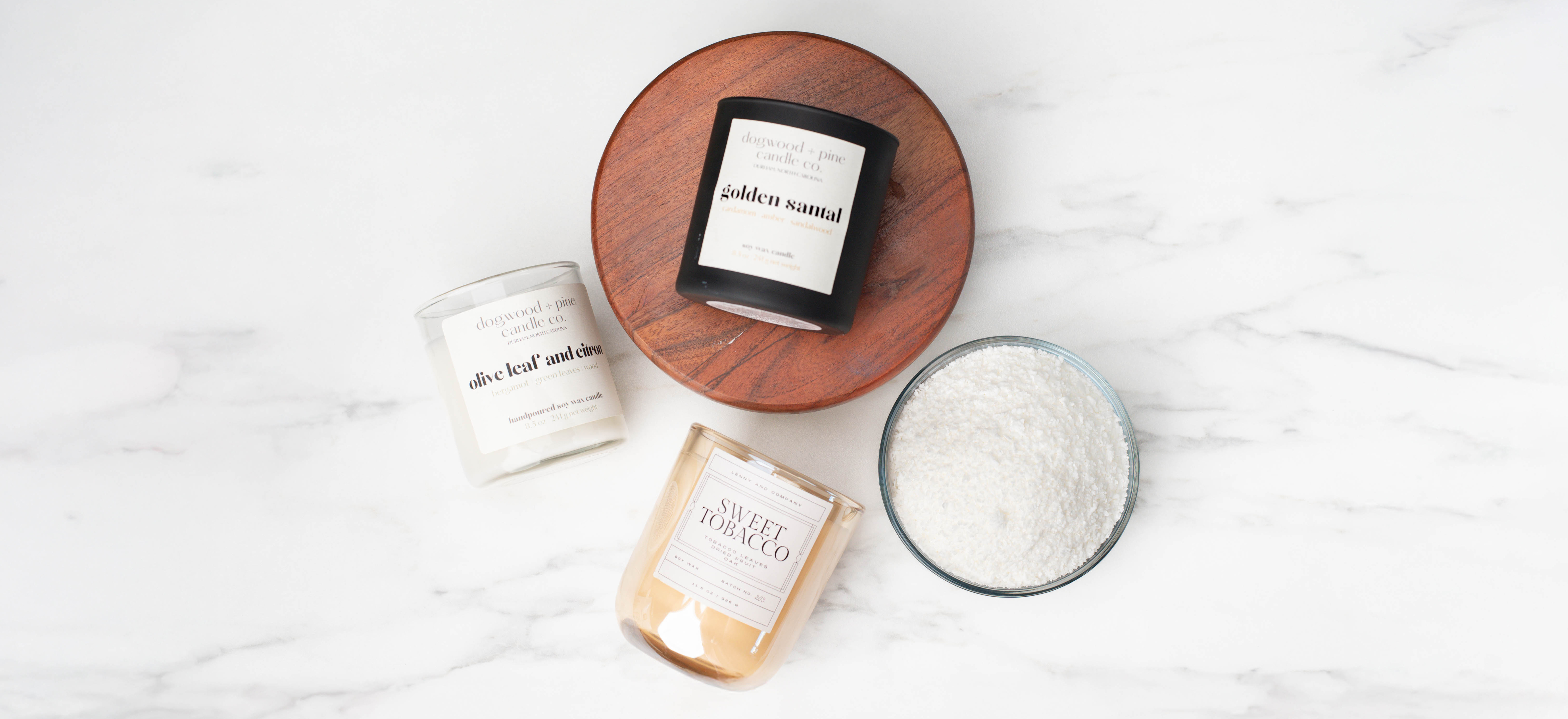
How to Market Your Candles
CandleScience SimplySoy™ Artisan Wax offers several advantages for makers. Its competitive pricing, lower than other soy waxes, opens up marketable opportunities. Businesses can maintain the same price point as other soy candles, leading to higher margins and increased income. Additionally, the ability to pour this wax at a higher temperature saves time, further boosting profitability.
Alternatively, makers could pass these savings on to customers, offering 100% soy candles at a reduced price compared to competitors. However, as a premium soy wax, we recommend highlighting its marketable features and retaining the higher margin for your business.
And, when it comes to labeling, we recommend following our Essential Guide to Candle Label Requirements and using our partner Avery WePrint to print your labels. CandleScience customers save 10% on every order!
Flush Packaging offers custom boxes for many of CandleScience’s candle containers. Custom shipping boxes can be an effective way to elevate your brand while protecting your product.